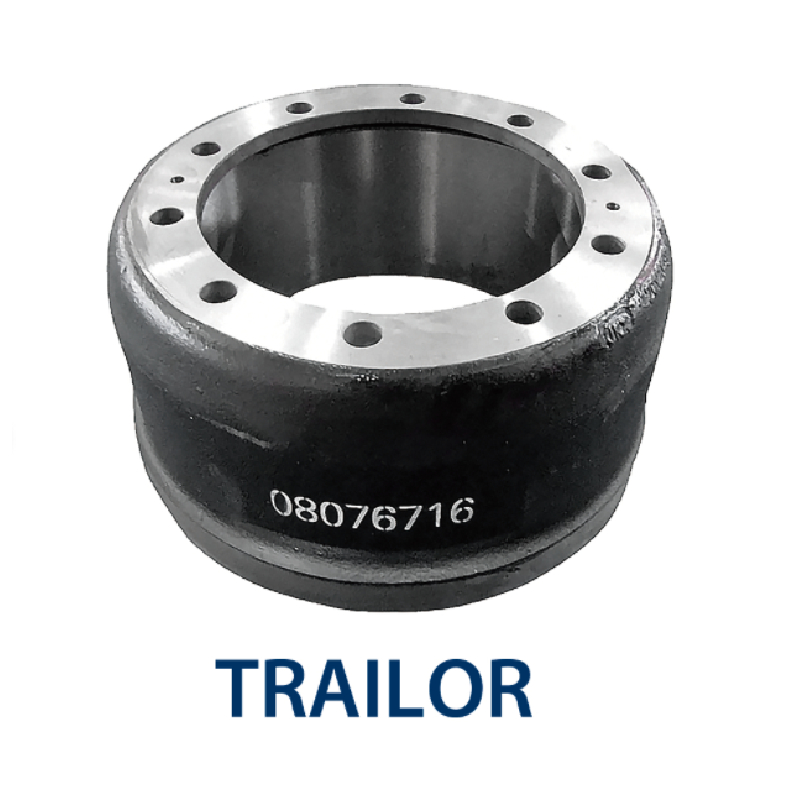Oct . 14, 2024 12:08 Back to list
Understanding the Mechanics and Benefits of Drum Brake Systems in Vehicles
Understanding Drum Brakes Mechanics and Applications
Drum brakes have been an essential component of automotive braking systems for over a century and continue to play a significant role in various vehicles today. While they are often overshadowed by the more modern disc brakes, drum brakes remain prevalent due to their simplicity, effectiveness, and cost-efficiency. This article delves into the mechanics of drum brakes, their advantages and disadvantages, and their applications in modern vehicles.
Mechanics of Drum Brakes
Drum brakes consist of several key components the brake drum, brake shoes, wheel cylinder, and various springs and mechanisms. The brake drum is a cylindrical component that rotates with the wheel. Inside the drum, two curved brake shoes are positioned against the inner surface. When the brake pedal is pressed, hydraulic pressure from the master cylinder forces the wheel cylinder to push the brake shoes outward against the drum. This friction between the shoes and the drum generates the resistance necessary to slow down or stop the vehicle.
The design of drum brakes allows for efficient heat dissipation, as the larger surface area of the drum can absorb and dissipate heat generated during braking. This makes drum brakes particularly effective in situations where extended braking is required, such as when going downhill or during prolonged stops.
Advantages of Drum Brakes
1. Cost-Effective Drum brakes are generally less expensive to manufacture than disc brakes, which makes them a popular choice for budget-friendly vehicles. Their simpler design leads to lower production costs and reduced maintenance expenses.
2. Effective at Higher Temperatures Drum brakes excel in conditions requiring sustained braking, as they can manage heat buildup more effectively than their disc counterparts. This characteristic makes them suitable for heavier vehicles, such as trucks and larger SUVs, that endure considerable stress on their braking systems.
3. Self-Adjusting Mechanism Many drum brake systems feature self-adjusting mechanisms, ensuring that the brake shoes remain in the optimal position without requiring frequent manual adjustments. This feature enhances the longevity of the brake system and reduces maintenance needs.
4. Good Performance in Certain Conditions Drum brakes can offer better performance in muddy or off-road situations, as their enclosed design helps prevent the accumulation of dirt and debris that might impair braking efficiency.
drum brakes

Disadvantages of Drum Brakes
Despite their advantages, drum brakes are not without downsides
1. Weight Drum brakes are typically heavier than disc brakes. This extra weight can affect the overall performance and efficiency of a vehicle, particularly in racing applications where every ounce matters.
2. Heat Dissipation Although drum brakes can manage heat well, they are more prone to fading under extreme conditions compared to disc brakes. Prolonged use without adequate cooling can lead to a reduction in braking efficiency.
3. Complexity of Maintenance While drum brakes have self-adjusting features, accessing the components can be more challenging than with disc brakes. This complexity can make maintenance and repairs more difficult for technicians and DIY enthusiasts alike.
4. Less Responsive Drum brakes generally offer less immediate response compared to disc brakes, particularly in high-performance scenarios. This quality can be a disadvantage in emergency braking situations, where instant brake response is crucial.
Applications of Drum Brakes
Today, drum brakes are commonly used in various applications, particularly in older vehicles, light trucks, and some economy cars. They are primarily used in the rear braking systems of many vehicles, as the front brakes typically utilize disc brakes for better performance. Some manufacturers maintain drum brakes in their designs for cost-efficiency and simplicity, especially in vehicles intended for daily commuting rather than high-performance driving.
Conclusion
In summary, drum brakes are a reliable and cost-effective braking technology that has stood the test of time. While they present certain limitations compared to modern disc brakes, their advantages still make them a favorable choice for many applications. Understanding the mechanics, benefits, and drawbacks of drum brakes is essential for anyone looking to maintain or invest in vehicles equipped with this tried-and-true technology. As automotive engineering continues to evolve, it will be interesting to see how drum brake systems adapt to meet the demands of future vehicles.
-
Durable Brake Drum MAZ for Heavy Duty Trucks | High Performance
NewsAug.26,2025
-
FUWA: Premium Quality, Reliable Performance & Innovative Solutions
NewsAug.25,2025
-
Liza Brake Drum: Superior Quality & Performance for Safe Driving
NewsAug.24,2025
-
Iveco Brake Drum | Premium OE Quality for Daily & Eurocargo
NewsAug.22,2025
-
Your Brake Drum Man: Quality & Performance Parts
NewsAug.21,2025
-
Explore Japan: Ultimate Travel Guide & Authentic Experiences
NewsAug.19,2025
